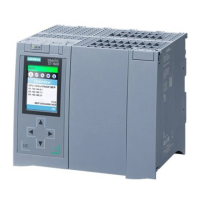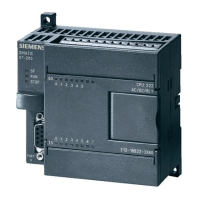Configuring communications connections
5.7 Configuring UDP connection properties
Configuring and commissioning S7 CPs for Industrial Ethernet
108 Configuration Manual, 09/2013, C79000-G8976-C182-13
For this reason, a communications module must accept broadcast frames and evaluate them
in its software. A major disadvantage of this is that network performance sinks significantly if
there are too many broadcast frames. The reason for this is that each individual module
needs to process all the broadcast frames to find out whether a frame is intended for it.
To avoid these disadvantages, S7 CPs handle broadcast as follows:
● Following reception, the broadcast frames are filtered out with high priority by all Ethernet
CPs. This means that frames that cannot be interpreted are discarded immediately. Only
frames that can be interpreted, for example an ARP request, are forwarded via the LAN
controller and evaluated. This prevents a negative influence on the other connections by
broadcast frames.
● For the application, this means that the S7 CP cannot receive broadcast frames intended
for the transfer of user data. It is, however, possible for the module to send broadcast
frames within the network.
Configuring a connection to all broadcast nodes
If you select "broadcast / all broadcast nodes" as the connection partner, you specify that
UDP frames are sent to all reachable broadcast nodes.
STEP 7 proposes a valid broadcast address in the network for the partner under the IP
address (IP).
You enter a PORT address suitable for all partners you want to reach under PORT.
Configuring a connection to all multicast nodes
By selecting "multicast / all multicast nodes" as the connection partner, you specify that
● sent UDP frames are delivered to all multicast nodes of the multicast group;
● Local devices in the specified multicast group are ready to receive multicast frames.
The multicast group is specified using the IP address and the port addresses.
STEP 7 proposes a valid IP address for multicast groups in the network for the partner under
the IP address (IP). When using multicast, the partner is always a group of recipients
(multicast group).
You enter a PORT address suitable for all partners you want to reach under PORT.
In principle, is it possible to address several multicast groups with one IP address. To
achieve this, you can create several UDP connections with the same IP address but different
PORT addresses.
Note
The port used for multicast frames must
be different from the port addresses of any UDP
connections that may have been configured.
If a configured UDP connection uses the same port address, the multicast frame of another
node that uses this port number may cause these connections to be terminate
d.
Note: Data is assigned to a configured connection based on the port number!

